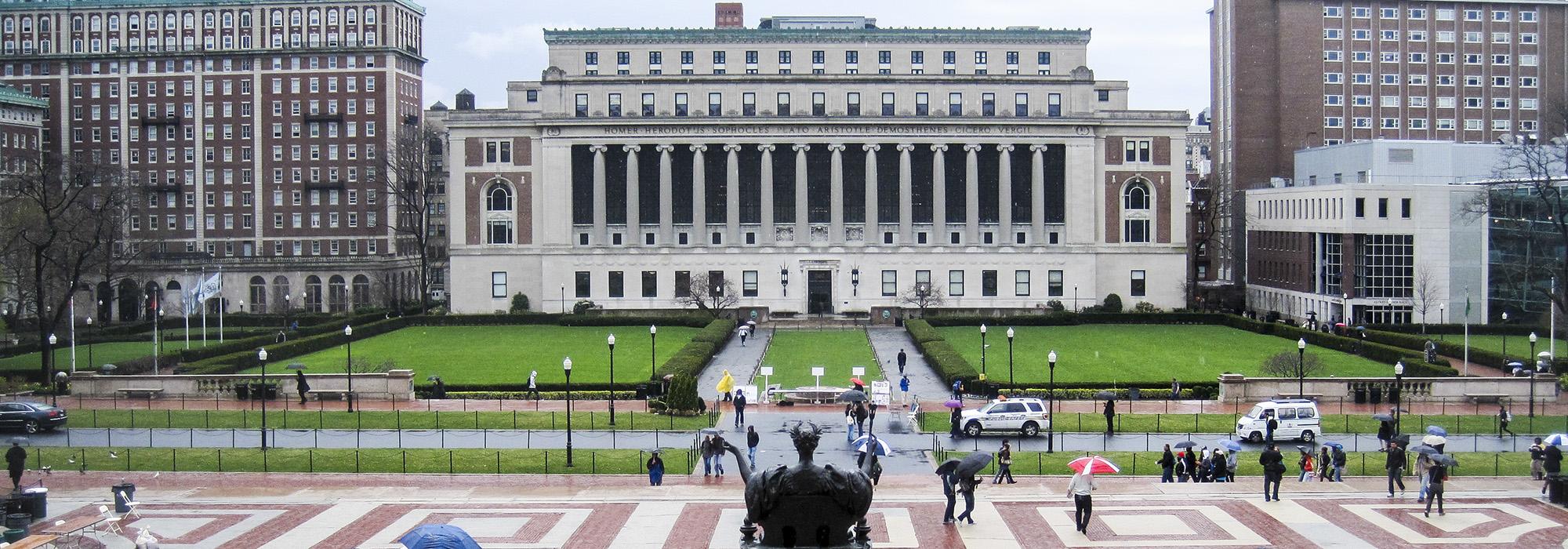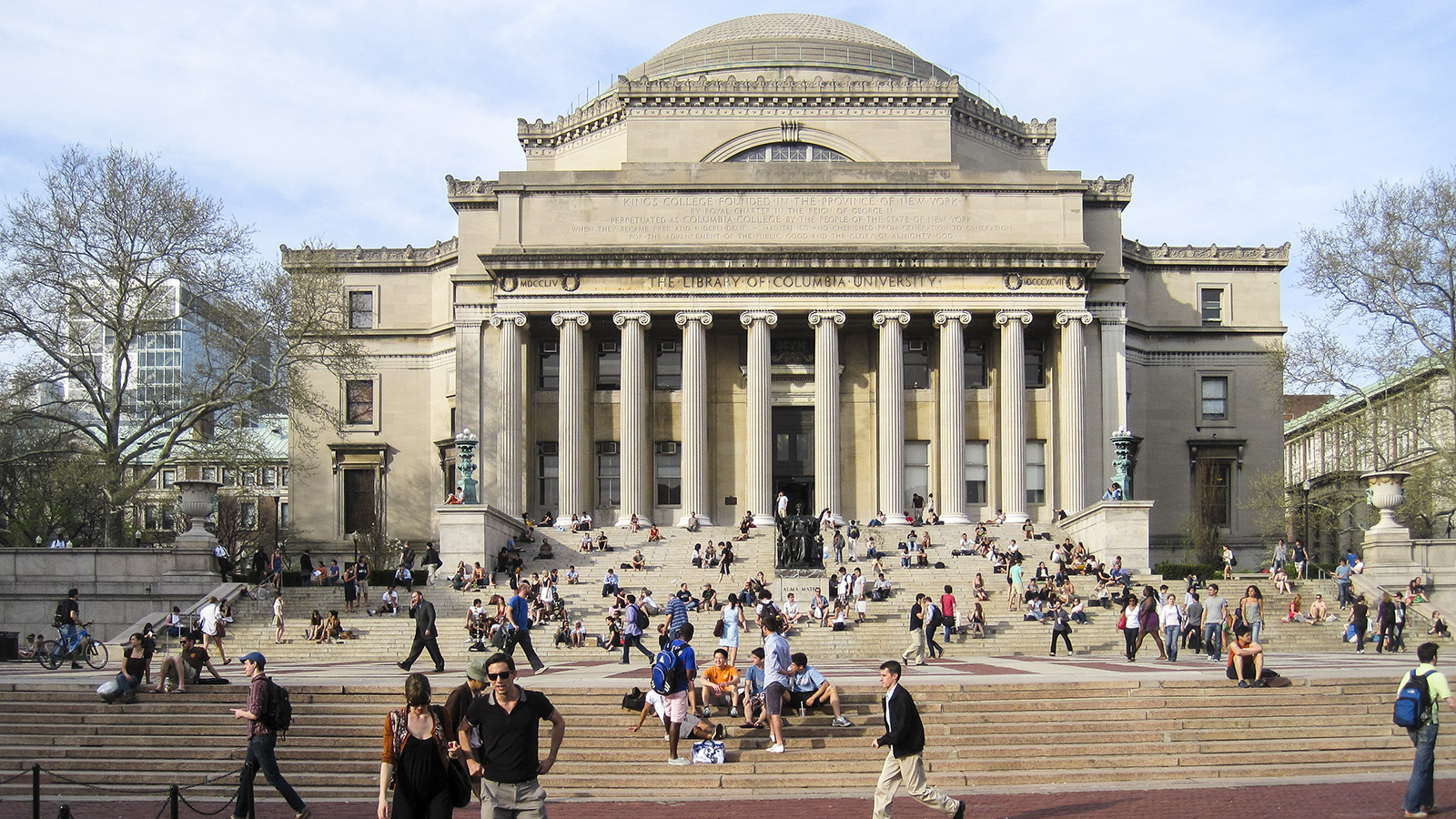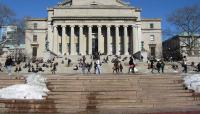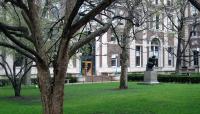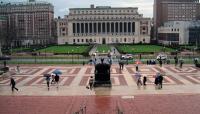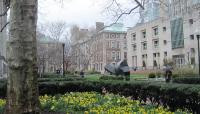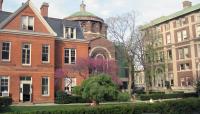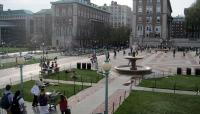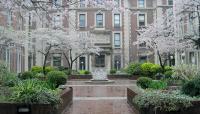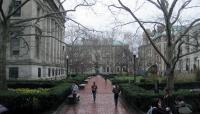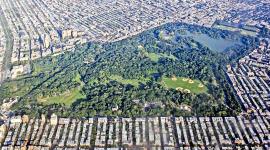Landscape Information
In 1893, Charles McKim, of McKim, Mead and White was chosen to design the Columbia University master plan. He consulted on the project with some of the country’s leading architects and landscape architects, including William Ware, Frederick Law Olmsted, Jr., and Frederick Law Olmsted, Sr. McKim created a rectangular, symmetrical campus organized around an east-west axis of entry across the middle, with Low Library at the center and lateral quadrangles divided by a series of bounded courtyards. McKim’s design conforms to the natural topography of the site and takes advantage of the campus’s position high in the city. The central plane of the campus, which was developed first, sits higher and had extended views until later development interfered.
In 1910, forty trees were planted along the perpendicular alleys leading inward from the entrances. During the late 1960s I.M. Pei created an updated master plan to accommodate campus expansion. Despite many changes, the campus retains McKim’s formal, City Beautiful character and organization. Columbia University also has the largest collection of McKim, Mead and White buildings in existence today, and a notable collection of public art, including Rodin’s seminal work The Thinker.



